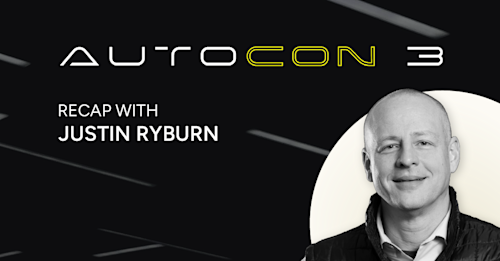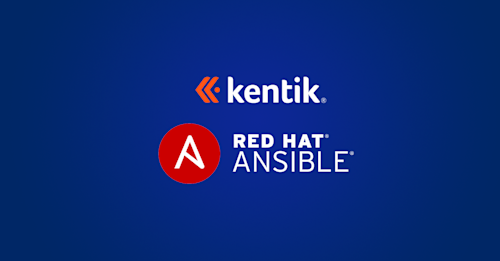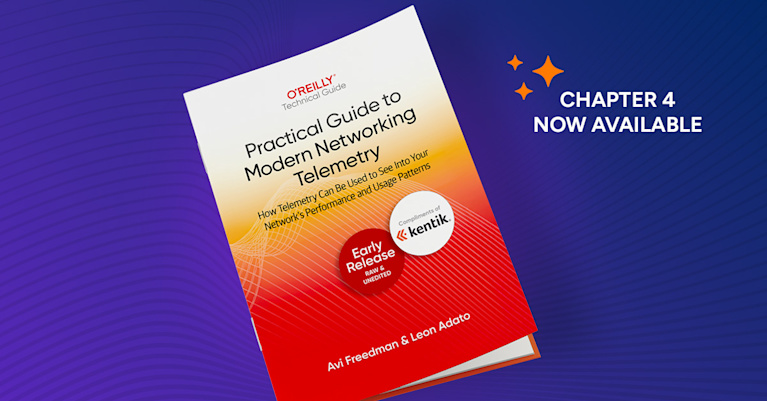
Summary
AutoCon3 in Prague offered important takeaways on network automation’s evolution, from hands-on learning and design principles to the impact of AI and the power of community. Read Justin Ryburn’s recap to learn about key insights from the event, showing why network automation is now a core competency you’ll want to understand.
Introduction
The network automation community recently converged on the historic city of Prague for AutoCon3, held from May 26-30, 2025. What unfolded was more than just a conference; it was a vibrant exchange of ideas, a deep dive into emerging best practices, and a powerful reinforcement of the human connections driving the future of automated networking. For those who attended, the week served as a poignant reminder of the rapid evolution within the field. For those following from afar, the insights shared promise to provide a valuable learning experience for months to come. Kentik is a proud sponsor of Network Automation Forum and their AutoCon events, so I was fortunate enough to attend. In this blog, I will provide some of my key observations from the week.
AutoCon workshops: Hands-on learning
Setting the stage for the week, AutoCon3 offered a rich array of workshops held on May 26-27. These sessions provided attendees with hands-on experience in critical areas, including source of truth (SoT) strategies, orchestration techniques, the application of AI in networking, and practical skills in tools such as Ansible, Nornir, NAPALM, Jinja, Python, and gRPC. Data modeling and low-code automation approaches were also explored, catering to a wide range of skill levels and interests.
I sat through excellent sessions, put on by Itential and NetBox, on the latest offerings in their products. It was a great way to spend some focused time understanding their offering and how it provides value to their customers. Our team here at Kentik hosted a workshop on network intelligence, giving the audience a taste of our product and an update on our AI advancements.
Opening keynote: The imperative of design in automation
The event kicked off with a compelling opening keynote by Claudia de Luna, titled Start at the Beginning – Automating Network Design. Her message was a crucial call to action: before a single line of code is written or a tool is chosen, the foundation of clear, well-defined requirements must be laid. De Luna persuasively argued that many network automation projects stumble not due to a lack of technical capability, but because they overlook this fundamental step. Most network automation projects start in the middle of the workflow, writing code before comprehensively documenting the desired outcome of the project.
She challenged the audience to shift the focus from perennial debates over specific tools to the more critical task of understanding the “why” and “what” of an automation endeavor. Drawing parallels between network automation and software development, de Luna emphasized the need for design requirements that are not only documented but also programmatically consumable, feeding directly into the development pipeline. This approach aims to bridge the often-problematic gap between design and operations teams, fostering a more cohesive and effective automation lifecycle. Her keynote underscored that successful automation isn’t just about technology; it requires leadership that champions clear communication, allocates defined resources, and ensures ongoing support for the solutions developed.
AutoCon’s key themes and illuminating discussions
Throughout the conference, several key themes emerged, reflecting the current preoccupations and future directions of network automation:
-
Design-driven automation: Echoing Claudia de Luna’s keynote, this principle was a recurring motif. Sessions explored how to translate high-level design intent into tangible, automated network configurations and operations, ensuring that automation efforts are aligned with business objectives from the outset.
-
Evolving tooling and architectures: The perennial discussion around tooling saw nuanced explorations. Comparisons like “Nornir vs. Ansible” moved beyond simple feature shootouts to discuss a deeper understanding of their respective strengths in different contexts. The rise of microservices architecture in network automation was another hot topic, with speakers sharing insights on building modular, scalable, and resilient automation platforms. The use of tools like Temporal for workflow orchestration and Terraform for infrastructure-as-code approaches in networking also garnered significant attention.
-
Real-world journeys and practical applications: Theory met practice in numerous sessions detailing actual automation deployments. Attendees heard firsthand accounts of automating enterprise campus networks, including the often-hard-won lessons learned along the way. The intricacies of migrating complex networks to EVPN using automated processes were laid bare, as were strategies for leveraging automation to proactively eliminate security vulnerabilities—a critical concern in today’s threat landscape. GARR’s journey in automating its optical network provided a fascinating case study in a specialized domain.
-
Democratizing automation: A refreshing perspective came from a session focused on making network automation consumable from a junior engineer’s viewpoint. This highlighted the importance of user experience, clear documentation, and intuitive interfaces in ensuring that automation tools and platforms can be adopted and utilized effectively by a broader range of network professionals.
-
The power of community: Beyond the formal presentations, AutoCon3 shone as a testament to the strength of the network automation community. The organizers and attendees created an environment conducive to spontaneous discussions, problem-solving, and the formation of new professional relationships. The Beehiiv summary aptly captured this “Human Infrastructure” element, emphasizing that the people, their shared experiences, and their willingness to collaborate are as crucial as the technology itself. Ongoing conversations on platforms like the Network Automation Forum Slack and the Packet Pushers Community Slack serve as a testament to this vibrant ecosystem.
Quick insights: Lightning talks
Lightning talks delivered quick, impactful insights into emerging technologies and novel solutions. Topics ranged from SONiC network automation and strategies for automating generic Access Points to the intricacies of the BGP Monitoring Protocol (BMP), security with HashiCorp Vault, and the burgeoning field of fine-tuning large language models (LLMs) for network-specific data and tasks.
Birds of a feather (BoF) lunch
On Thursday at lunch, attendees had the opportunity to sit at a table with a specific topic assigned to them for discussion. The Network Automation Forum referred to this as the BoF Lunch. Dinesh Dutt and I had the pleasure of leading the Observability Automation topic. Most of the discussion was around building a system to collect, store, and report on metrics. For the most part, this is a solved problem for SNMP. However, with Streaming Telemetry, this becomes more difficult. gNMI seems to be the standard that folks are converging on. Building a high-scale collection platform using open source tools is not as easy as it sounds. There is a lot more data to deal with.
The road ahead: Network automation as the new norm
AutoCon3 in Prague left attendees with a clear sense that network automation is rapidly moving from a niche specialty to a core competency. The conversation has decisively shifted from whether organizations should automate to how they can do so effectively, scalably, and sustainably. This evolution necessitates a corresponding shift in the skills and roles of network engineers, who are increasingly becoming developers, integrators, and orchestrators of complex, automated systems.
The emphasis on open and composable solutions, the pragmatic discussions around real-world challenges, and the burgeoning exploration of AI’s role in network operations all point towards a future where networks are more intelligent, resilient, and responsive to business needs.
In conclusion, AutoCon3 was more than just a recap of current achievements; it was a forward-looking event that helped set the agenda for the next phase of network automation. The insights shared, the tools explored, and, most importantly, the connections made in Prague will undoubtedly contribute to building a more automated, efficient, and innovative future for networking. If you missed this one, I encourage you to check out AutoCon4 in the fall in the US. You should also keep an eye on the Network Automation Forum’s YouTube channel for recordings from the week.
This article originally appeared on Justin Ryburn’s personal blog. Kentik is grateful to have so many incredible writers on our team, willing to share their work with us. See the original post.



